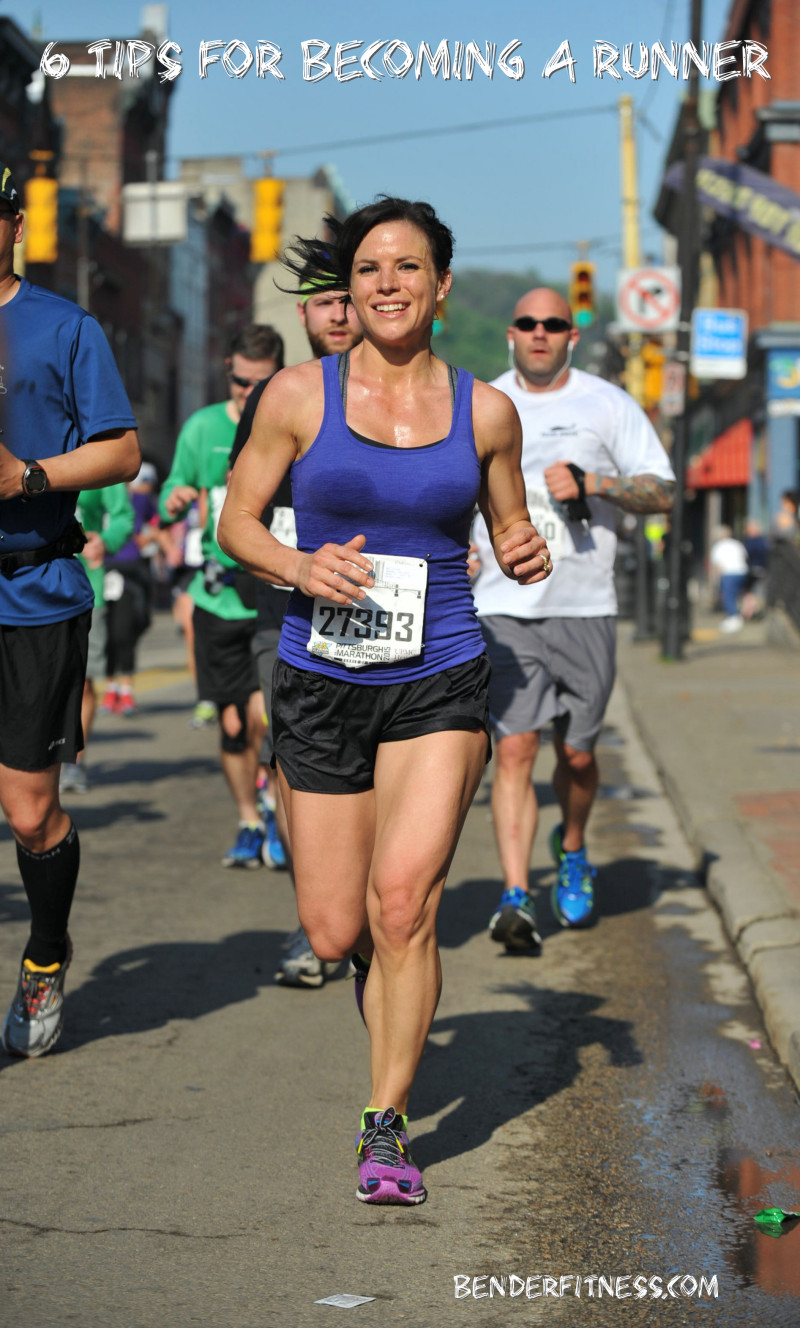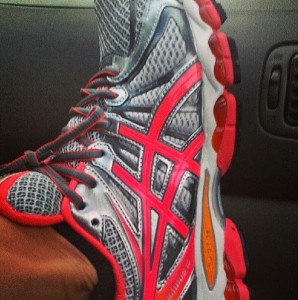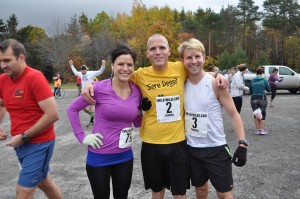6 Tips for Becoming a Runner & Starting a Running Program
by Jesse Bender
When discussing running, one of the most common questions I receive is, “How do I become a runner or how do I even start?” My mind floods with positive responses; I’ll attempt to be precise.
There is no set-pace that a person must run to be considered a “runner.’ If you push yourself on a regular basis to ambulate faster than a walk with a pace that is slightly difficult, you are a runner. Do not let anyone ever tell you otherwise.
The Pre-Tip List for Becoming a “Runner”
There is only one Pre-Tip: We all hear that we should consult a physician prior to engaging in any new difficult physical activity. If you suffer from any joint pain, heart complications, back-problems, medication side-effects, or have not participated in cardio training of any sort within recent memory, I STRONGLY suggest consulting your physician prior to running/hiking/bungee jumping/cycling/Zumba/weight training/etc. anything that will elevate your heart rate.
Once you receive the green-light from your doctor, it’s time to kick the tires and light the fires!
1.) CONSIDER YOURSELF A RUNNER!
As stated above, there is no predetermined distance, pace, or race that must be completed by a human in order for them to be considered by other humans a “runner.” The moment you make the true mental decision to start running, then you are a runner. This switch of a mind-set is imperative to you starting and sticking to a running regimen. Literally, tell yourself, “I am a runner now! I start (enter day) at (enter time)! ” and stick to that day and time!
2.) FIND THE RIGHT PAIR OF (ACTUAL) RUNNING SHOES:
“Well, Mr.Smarty-runner, what is considered an actual pair of running shoes and why do I need them?” Running shoes are any shoes designed and created for running. Many shoe companies have products that are designed for Fitness, Walking, Cross Training, or Hiking. These shoes are not horrible for you but, should be utilized accordingly and not for multiple miles of running either on a treadmill or outside. Most shoe companies (Nike, Reebok, Adidas) have designated “Running” shoes. These shoes are created to withstand the rigors of hundreds of miles of running and are designed to provide shock absorption, ankle support, traction so you do not slip, and breathable for your feet.
When I said to buy the right pair of running shoes I mean that to it’s literal sense. You must find the pair of shoes that fits you most comfortably and provides you with the correct amount of support for your specific step-type or strike-pattern (Neutral, pronation, supination). Do not worry about what other people are buying or their looks. Only your foot can decide! With the correct pair of shoes, you will avoid injury and increase your running capabilities with greater ease. I strongly suggest buying your first pair of running-shoes from a running specialty store or a sporting goods with knowledgeable staff that can help you learn what type of shoe is right for you.
Some brands I recommend to try-on are: Brooks, Saucony, Mizuno, Asics, New Balance, and Nike!
3) FIND THE RIGHT RUNNING AREA
Running is extremely therapeutic, rewarding, and dangerous. Yes, I said dangerous. Many beginning runners do not understand the safety strategies that can save your life. The first step to staying safe while running is to find a safe area to run in. Whether you are running on streets or trails, be aware that other people may and will probably not be looking for runners.
Find an area to run in that has minimal traffic, low possibility of crimes, well-lit, and provides you the ability to summon others should an emergency arise. Many state parks or small neighborhoods can provide a very safe running environment. Also, try your best to choose an area that provides you with some flat spaces and as well as hills to run on. Varying terrain will ensure you to efficiently progress as a runner. These all sound nerdy, but take it from a runner who has been hit by two-cars, almost hit by traffic on numerous occasions, bit by multiple dogs, and been chased down by “seedy” strangers under a bridge. Pick a safe place to run that isn’t too difficult for you.
4) CHOOSE A TRAINING PLAN
There are a plethora of beginner-runner schedules, Apps, and programs in books! No matter the media form you choose, pick a training plan for beginners such as a “Couch to 5k.” Having a set schedule for you to know what and when to run, walk, rest, etc. is essential to improving in any respect as a runner. Consistency is the most imperative factor of anything done in life! Running is no different, and a pre-determined schedule will significantly aide you in your journey.
You might like: Running for Beginners.
5) DO NOT BE ASHAMED TO WALK
Running is a building process! You do not say you are a runner and beat yourself up because you didn’t crank-out a 7 minute mile your first crack at it. You have to build your cardiovascular system, pulmonary system, and even nervous system to properly handle rigorous activity for prolonged periods of time. Running is the ideal example for improving ones self through consistent work. Not many other sports or activities rely so heavily on your own dedication and progress.
When you begin running and you find it difficult to breath, or you feel the pace is too much to handle, then stop! Don’t stop moving, but, stop the pace that has you breathing so heavily. Most importantly when you are beginning, you do not want to push yourself to the brink. Working to hard to fast will lead to injury or difficulty sticking with running. The best way we coach people to build all of their capabilities to run for any distance is to mix walking and running. Try walking for the first 3-5 minutes of a run in order to elevate your heart rate closer to a running pace. Then, try running for 2-5 min switching walking and running until you’ve reached your time or distance goal for that day. Luckily, most beginner running programs (as mentioned above) will have walking or “active rest” breaks built into the regimens.
6) RUN FOR FUN…WITH A FRIEND
As per most things in life, it’s better with someone! Running is no different. Try to find a person who is at or near your running capabilities to run with. You do not need to run with them every time but, having scheduled runs with other people will help you stay more consistent and accountable with your own training. Plus, running can get very boring from time to time. Having a running-buddy to talk with and share motivation/complaints with is extremely fun! Not to mention, running with someone helps keep you safe.
I hope these tips are helpful in the slightest for you! Please, leave us any running/fitness questions or comments for future posts and videos!
NEXT RUNNING ARTICLE:
SAFETY TIPS FOR RUNNERS/WALKERS!





Thank you Jesse!! I have been a runner for many years but have never run anything longer than about 12km. I have set myself a goal to run a 22km mud run in November and have been training for it using both Melissa’s workouts and your running tips from your Q and A video. Thank you so much for your help!! Grace.
This was helpful Melissa.
Hi, great tips. I’ve already been running for a while now. Did most of the stuff (especially walking in between at the very beginning and running with a friend kept me going)
Just recently I started tracking my pulse and discovered it’s really high (like over 175) even when I’m running a pace I can go on for 5km. I’m in my late 20ties and also do some other sport, so you’d assume my body is capable of more. I was wondering how I should go about it to reduce my pulse. Run slower but longer? Do intervall training?
Hope you may could answer that in a future post.
Thanks a lot for your effort. Also really like Melissa’s workouts.
Cheers
There is a lot of variation in individual pulse rates. How do you feel when your pulse is in the 170s? If you feel like it is a comfortable effort that is most likely an okay range for you. You can always confirm this with your doctor to make sure there isn’t anything going on medically. 🙂 My heart rate gets pretty high during workouts, but my husband’s heart rate always stays low. Everyone’s baseline is a little bit different.
Great tips for beginners, and all runners! I have been running for almost 10 years, including through pregnancies, and these are the things I tell others who want to get started as well. It is all about consistency and gradual buildup. It took me years before I felt ready for half and full marathons. The steady buildup and consistency has allowed me to run without any significant injuries all these years. I think you guys do a great job teaching all these wonderful health tips and techniques. Thanks for all you do!
I want to thank you both for the great workouts and now this information about running. I read your article because I’m being trained this Saturday as a coach for the “Girls on the Run” program, which we are trying to get going at the elementary school where I teach. I have been running for 10 years, but I picked up some great ideas to share with the young ladies that I’ll hopefully be coaching. Thanks for sharing your knowledge, Jesse, and of course your awesome workouts, Melissa!
That’s such a great program! I’m so glad we can help! 😀
Hi Melissa! I really appreciate all of these tips as I’m starting to get into running more! I was wondering though if you could recommend any gear that would allow me to easily take my phone on runs with me? I love to take my phone with me to listen to music, but I’m having trouble finding just the right armband/running pouch to carry my phone in. Any advice would be greatly appreciated! Thank you again for all of your amazing posts and videos!!